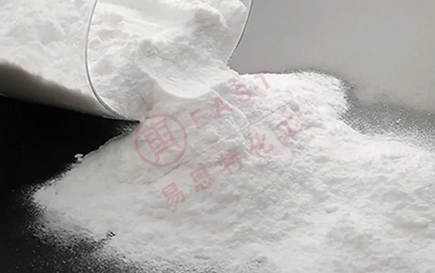Sodium Bicarbonate for Pools: Why You Should Put It in Your Swimming Pool?
With summer approaching, you've probably been dreaming of jumping into the backyard pool (and if you haven't, then your kids sure are!) . But getting your pool ready for the hot summer days is more than just filling it with water and pouring in chlorine.
Keeping your pool fresh and clear requires the right balance between pH and alkalinity. Before you head to the shop to buy a chemistry textbook, let me assure you that keeping your pool's water quality is not as difficult as it sounds.
This article will explain what pH and alkalinity mean and how they affect the water (and the people who swim in it). You'll also learn how you can avoid potentially costly repairs by fixing pH problems yourself.
pH and Alkalinity: The Science of Swimming Pools
Simply put, pH is a measure of how much acidity is in a water solution. A low pH means the water is more acidic, while a high pH means the water is more alkaline.
Alkalinity is a measure of how much acid is neutralised in an aqueous solution. Pure water is neither acidic nor alkaline, with a pH of 7. However, the water in your pool is not pure; everything that enters the water affects both concentrations, including chlorine, debris, and lotions.
You may be wondering why it is important to maintain the proper pH level. A high pH level reduces the effectiveness of chlorine, which means it can't fully sanitise the water. Swimming in a pool with a high pH level can lead to red, irritated eyes, dry skin, and even increased wear and tear on swimming costumes and goggles.
A low pH means the water is too acidic, which can damage the pool, swimmers ...... and your wallet. Acidic pool water can cause dry, itchy skin and stinging eyes and noses. But the biggest damage caused by low pH is to the pool itself.
Acidic water is extremely corrosive and can cause metal parts of ladders, railings, light fixtures, and even pumps and filters to rust. It also causes cement paste, mortar, concrete and stone to deteriorate more quickly, and prolonged exposure to low pH can make vinyl brittle and cause cracks and tears. Finally, low pH reduces the amount of chlorine in the water, leading to cloudy water and increased algae build-up.
Obviously, maintaining the proper pH level in your pool is critical not only for protecting your pool and its equipment, but also for the people who swim in it. In the next section, you will learn about sodium bicarbonate and how to use this chemical to address pH issues.
It is true that there are dozens of products on the market that can raise or lower pH levels. However, these products are often expensive and contain other unnecessary chemicals.
For years, pool management companies have been using sodium bicarbonate as a non-toxic and cost-effective solution to low pH levels. Sodium bicarbonate is the scientific name for a very common item you may have in your home: baking soda.
As we mentioned, you can find dozens of products that can raise pH levels, some of which are even advertised as bicarbonates for swimming pools.
The downside to using these products is not only the higher cost, but also the risk these chemicals can pose to people and animals that come in contact with the water. When you start having pH issues, it is cheaper and safer to head to the grocery shop and purchase baking soda.
Another advantage of using this form of regular sodium bicarbonate is that it also increases the alkalinity of the water, resulting in a more stable pH level, which is especially helpful if the water in your pool becomes cloudy.
Testing the water quality
Don't assume it's time to go to your local grocery shop and buy all the baking soda you can simply because you've noticed some cloudy water or rust on your pool ladder. It's important to test the water in your pool on a regular basis using a test kit (most pool management companies recommend at least once a week).
You can purchase one at any pool supply shop and simply take a sample of your pool water and place a test strip into the sample. These test strips are colour coded to show if the pH is too high or too low.
Generally, it is recommended to add 3-4 pounds of sodium bicarbonate per 10,000 gallons of water if the pH is 7.2 or lower, or 2 pounds of sodium bicarbonate per 10,000 gallons if the pH is 7.2-7.5.
pH levels above 7.5 are normal and do not require adding anything to the water. Be sure to allow the pool's filtration system enough time for the baking soda to circulate in the water and do not allow anyone to swim until the water is clear.
Maintaining the water quality of your pool may seem like a daunting task, but thanks to sodium bicarbonate, it doesn't have to be expensive. Using simple baking soda or sodium bicarbonate pool chemicals will ensure that you and your family always have a refreshing, crystal clear pool.
328
0
0


Comments
All Comments (0)